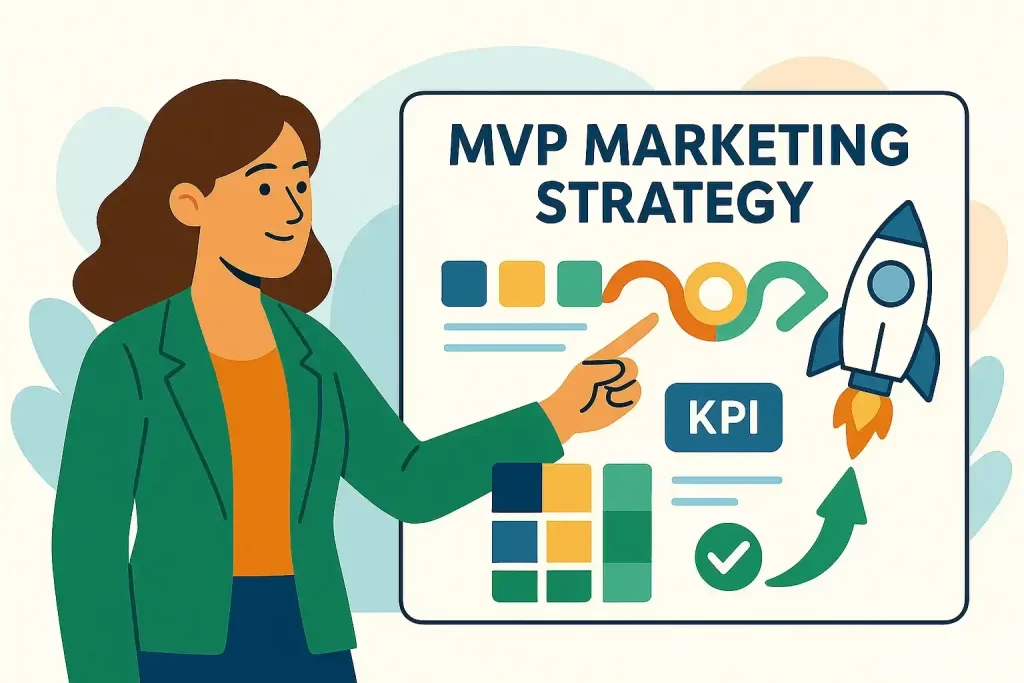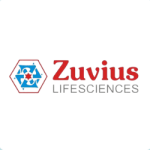Don’t Waste Money: How to Market Your Minimum Viable Product (MVP)
You’ve built your Minimum Viable Product (MVP). Now, you need to know if people will actually use it. MVP Marketing Strategy for Startups is how you test your idea without spending a lot of cash. It’s not about big campaigns; it’s about learning what works.
The goal of MVP marketing is simple: You want to find early users. Then, you must get their feedback fast. Therefore, you can improve your product before a big, expensive launch.

1. Pre-Launch Strategy for Startups: Build Hype and a Waitlist
You don’t have to wait until your product is ready to start marketing. In fact, pre-launch work is often the most important part.
- Define Your Ideal User: First, know exactly who needs your product most. Focus only on them. For example, if you built a tool for designers, ignore everyone else for now.
- Create a Simple Landing Page: Build one simple webpage that explains your product’s core benefit. It must include a clear call to action (CTA) to sign up for a waitlist.
- Use Free Channels: Since you want low or no-budget digital marketing, post on forums like Reddit, Facebook groups, or LinkedIn where your ideal users hang out. However, always offer value, not just a sales pitch.
- Collect Emails: Most importantly, gather emails. These are your first test group.
2. Launch MVP Strategy: The Focus on Feedback, Not Sales
The MVP launch is not about making millions. It is about finding a product market fit guide.
- Start Small: Invite the first 50-100 people from your waitlist. This ensures you can handle their issues.
- Focus on 1 Metric: Do not track 20 things. Instead, track one thing that shows your product’s core value. For instance, track “Number of photos uploaded” or “Days users log in each week.”
- Direct 1-to-1 Communication: Use email or a simple chat tool to talk directly with every early user. Ask them what they love and what they hate. This feedback is gold.
3. Post-Launch MVP: Agile Marketing and Iteration
After launch, your marketing becomes part of your product development process. The main task is to keep testing and changing.
- Track Key Actions: Watch what users do after they sign up. Therefore, track how many complete the main task (your Aha Moment).
- Use Email to Nurture: Since email is cheap, use it to encourage users to come back if they stop using your product.
- Iterate Based on Data: If 50% of users quit during setup, fix the setup first. Don’t spend money on ads until the core problems are solved. This lean approach saves money.
💡 Conclusion: Reduce Risk, Learn More on Marketing Strategy for Startups
The MVP Marketing Strategy for Startups is the best way to reduce risk. It forces you to talk to users early and spend money only when you know your product works. By focusing on quick feedback loops, you make sure your next version is exactly what customers want.
👉 Launching an MVP?
Don’t go it alone. Our Startup Marketing Consulting can help you validate your ideas and acquire early users efficiently.
→ Get Started With Your MVP Strategy Today!
❓ Frequently Asked Questions (FAQ): MVP Marketing Strategy for Startups
What is an MVP in simple terms?
An MVP is the Minimum Viable Product. It is the simplest version of your new product that you can build. It only has the main features needed to solve the customer’s core problem and lets you start learning immediately.
Why is MVP marketing different from regular marketing?
Regular marketing aims for scale and high sales. MVP marketing, in contrast, aims for learning and validation. Its purpose is to prove the idea works and find product-market fit before you spend money on big advertising campaigns.
How much should I spend on MVP marketing?
You should spend as little as possible. Use free channels like social media and email first. Only spend money on targeted ads to test a specific user group or message, and only after you have some positive feedback.
What is the ‘Aha Moment’ in MVP marketing?
The Aha Moment is the point when a user first realizes the true value of your product. For example, for Dropbox, it was when they saw their files sync across devices. Your marketing should lead users directly to this moment.
When should I switch from MVP marketing to full marketing?
You should switch when you have achieved product-market fit. This means your current users are actively using and recommending your product. Only then should you start scaling your marketing budget.

















One Response
Nice blog here Also your site loads up very fast What host are you using Can I get your affiliate link to your host I wish my site loaded up as quickly as yours lol